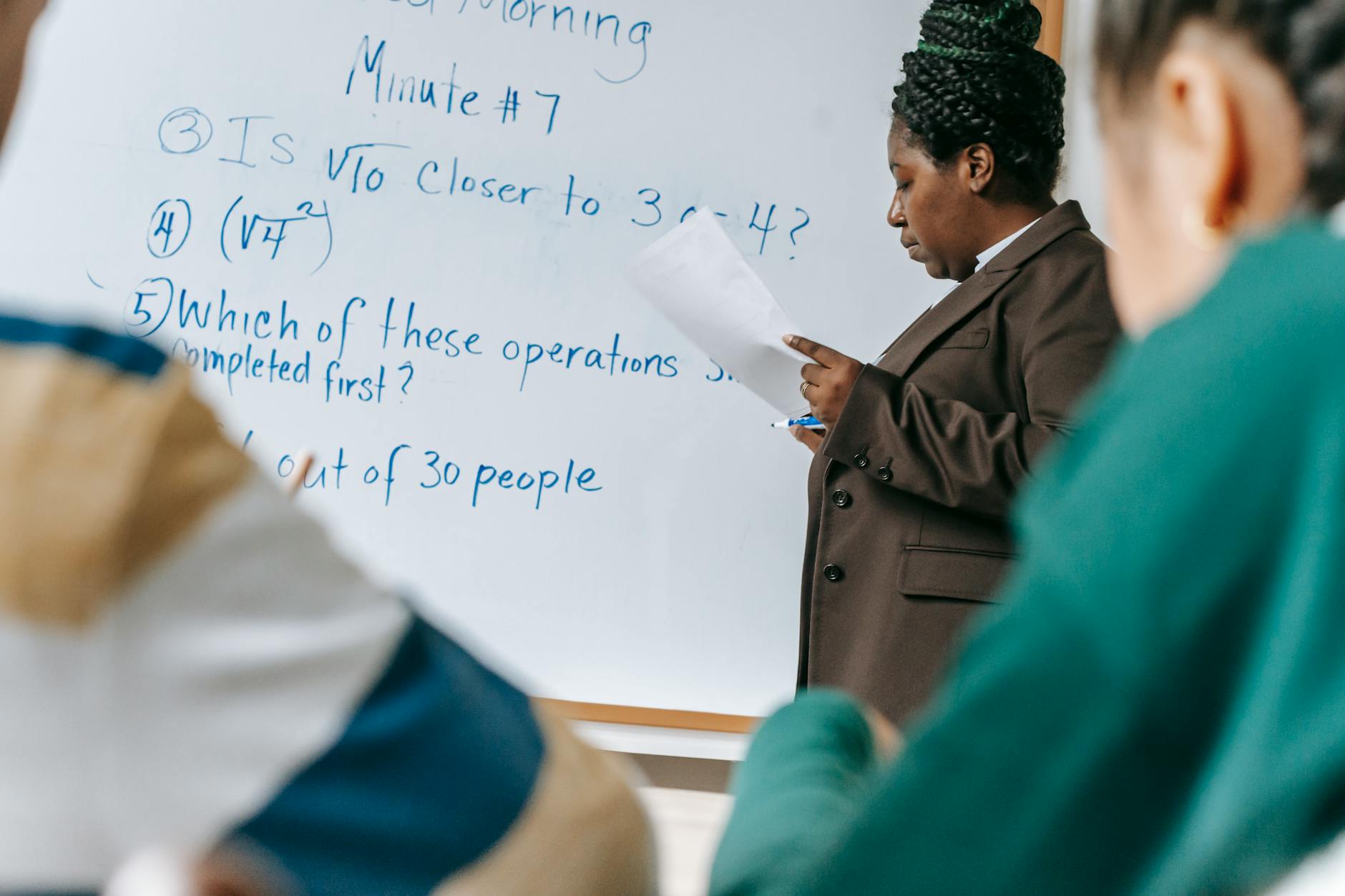How to Integrate Technology into Early Childhood Education in Australia

Assessing Current Practices
Technology Usage in Classrooms
In the vibrant city of Sydney, where the iconic Royal Botanic Garden provides a natural playground for young learners, integrating technology into early childhood education requires a thoughtful approach. From digital storybooks to educational apps, technology is reshaping how teachers engage with their students. As an enthusiastic educator, I know first-hand the potential these tools have. Within community services courses, adapting technology aligns with our mission to support diverse learning methods, making it an exciting time for both teachers and children.
Teacher Competency Levels
Being proficient in digital tools is crucial for any teacher in today's educational landscape. Competency levels vary greatly, but the aim is always to enhance the educational experience. In my experience, Sydney's educators are rising to the challenge, motivated by professional development programs that mirror those found in aged care courses online, ensuring they stay ahead in their teaching strategies.
Evaluating Child Engagement
Observing how children interact with digital tools can be both insightful and rewarding. When I see kids' faces light up as they engage with interactive games, it confirms technology's role in enriching their learning journey. Measuring engagement is more than just counting happy moments; it's about ensuring tools are genuinely enhancing their ability to think, question, and explore. Here in Sydney, our commitment to integrating technology is strong, enabling children to thrive in our digital world.
Selecting Suitable Technologies
Age-Appropriate Tools
Choosing the right technology for young learners is crucial. Tools and devices need to be tailored to the developmental stages of early childhood. Age-appropriate tablets and software can offer interactive experiences that captivate children's attention and inspire creativity. For instance, educators in Australia might consider integrating simple touch-based applications that develop basic skills such as counting and letter recognition. Taking inspiration from places like the Australian National Maritime Museum can further enhance learning, encouraging interactive discovery to spark curiosity.
Interactive Learning Apps
Interactive learning apps provide a dynamic way to engage children and foster constructive playtime. Numerous apps focus on themes relevant to early childhood education, from storytelling to problem-solving. Early childhood education apps often include features that allow children to explore their environment digitally, making learning personal and meaningful. This digital interaction complements traditional education methods, offering a balanced approach that caters to different learning styles and preferences.
Safety and Privacy Concerns
Incorporating technology comes with its own set of challenges, primarily concerning safety and privacy. It's essential to ensure that any technology used complies with guidelines to protect children's data and privacy. Educators and parents should prioritize platforms that provide robust security measures. When exploring options for aged care training or applications used in early childhood settings, vetting them thoroughly is crucial to protect young learners. By maintaining strict standards and staying informed, we can create a secure technological ecosystem for education.
Implementing Technology Effectively
Blending Traditional and Digital
Incorporating technology into early childhood education requires balancing digital tools with traditional methods. For instance, interactive tablets can be integrated into classroom activities that also involve hands-on learning experiences. This approach ensures children develop child care courses foundational skills while adapting to new technology. Visiting places like the Royal Botanic Garden can offer children a chance to engage with nature, which complements their digital learning experiences.
Teacher Training Programs
One of the critical aspects of successfully integrating technology in education is through comprehensive teacher training programs. Educators need to gain proficiency and confidence in using digital tools to maximise their effectiveness. Courses such as cert 3 in individual support can empower teachers with practical skills and techniques needed for the modern classroom. While technology holds immense potential, it's crucial that educators feel capable of guiding young learners through these tech-driven environments.
Encouraging Parental Involvement
Parents play a pivotal role in supporting their child's educational journey, and their involvement is vital when integrating technology. Schools can organise workshops, perhaps in collaboration with the Australian National Maritime Museum, to show parents firsthand how technology enhances learning. By connecting technology's advantages, parents can mirror supportive activities at home, thus reinforcing the learning objectives established in the classroom. This cooperative effort between educators and parents ensures children receive a balanced and enriched learning experience.
Measuring Impact on Learning
Monitoring Child Development
In the world of early childhood education, understanding how technology influences child development is essential. It's crucial to observe how tools like interactive apps impact children's cognitive and social skills. For instance, while pursuing a diploma of community services, I learned about the importance of using various assessment tools to measure developmental milestones. This approach helps educators like us gauge what children absorb through digital platforms compared to traditional methods.
Gathering Feedback from Educators
To truly understand the efficacy of technology in learning environments, collecting feedback from educators is invaluable. Teachers, drawing from their firsthand experiences in the classroom, provide insights into what works and what doesn't. Feedback sessions, therefore, become a platform for educators to share their perspectives on integrating apps from aged care courses, which frequently offer advanced interactive modules similar to those used in early childhood settings. Sharing ideas through professional development workshops enhances our collective understanding and facilitates knowledge exchange.
Adjusting Strategies to Improve
Implementing technology in education isn't a static process. Regularly revisiting and adjusting strategies ensures the most effective use of digital resources. By analyzing both educator feedback and child development data, it's possible to refine methods or introduce new elements that better serve educational goals. This adaptability ensures that teaching methods continuously evolve, aligning with advancements in technology and meeting the ever-changing needs of our learners.
Best Practices for Integrating Technology
Establishing Inclusive Policies
When considering inclusive technology policies in early childhood education, it's essential to ensure accessibility for all children, including those with additional needs. At a local Sydney childcare setting, I witnessed a team approach to inclusivity where the Royal Botanic Garden hosted an outdoor workshop integrating nature with digital learning. By using tablets with screen readers, children with visual impairments could participate fully. Similarly, leveraging such tools can ensure every child's engagement is equal and well-supported. Encourage collaboration with local organisations, like the Sydney Children's Hospital, for insights into adaptive technology solutions.
Overcoming Common Challenges
Common hurdles, like limited technical knowledge and resource allocation, often emerge. During a PD day at a Sydney preschool, a fellow educator shared a challenge of inconsistent Wi-Fi impacting lesson flow. As a collective effort, the school connected with tech-savvy parents to volunteer, mirroring a maritime tech workshop at the Australian National Maritime Museum. Building a community network might just be the key to overcoming technical hiccups. Facilitating workshops and fostering open dialogue with families can bridge gaps, enhance understanding, and ensure technology isn't just a novelty but a genuine educational tool.
Ensuring Continuous Improvement
Continuous adaptation and evolution in teaching strategies are crucial, especially in tech integration. Implementing regular reviews of educational technologies, as one would with traditional curricula assessments, ensures that tools remain effective and relevant. During my years in early childhood education, I noticed that routinely gathering feedback from both parents and students was game-changing. A Sydney-based kindergarten leveraged this practice by organising term-end tech showcases, where children demonstrated their projects. This approach not only reinforced learning outcomes but also engaged families, solidifying their role as partners in the educational journey.


